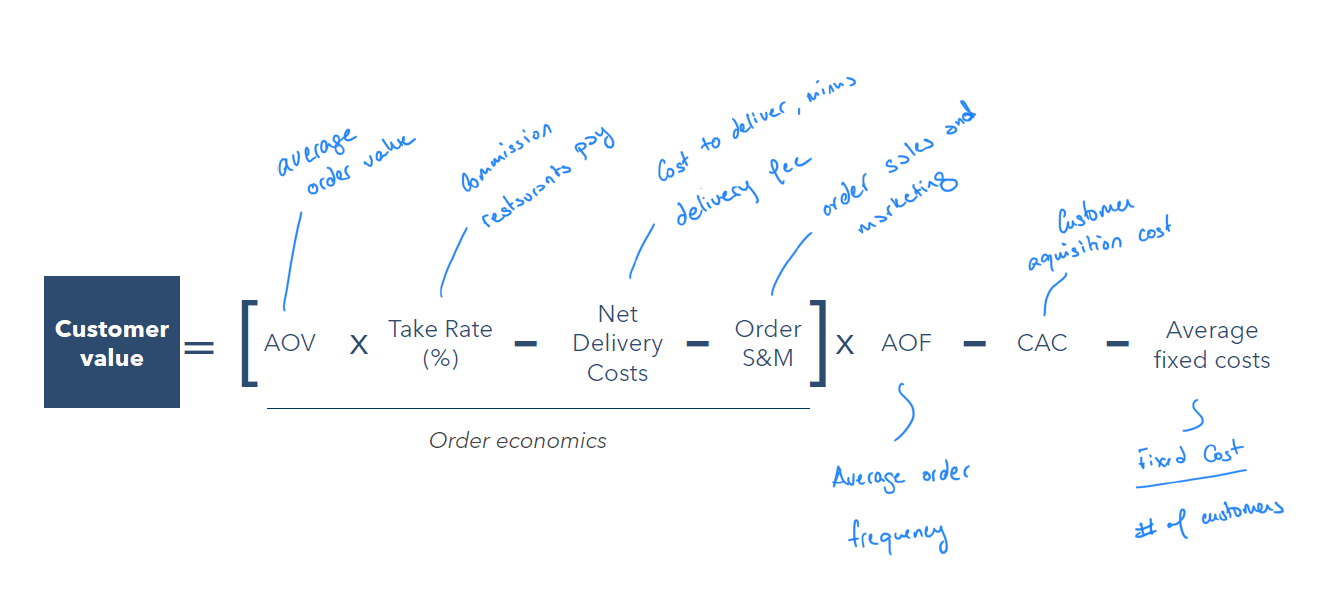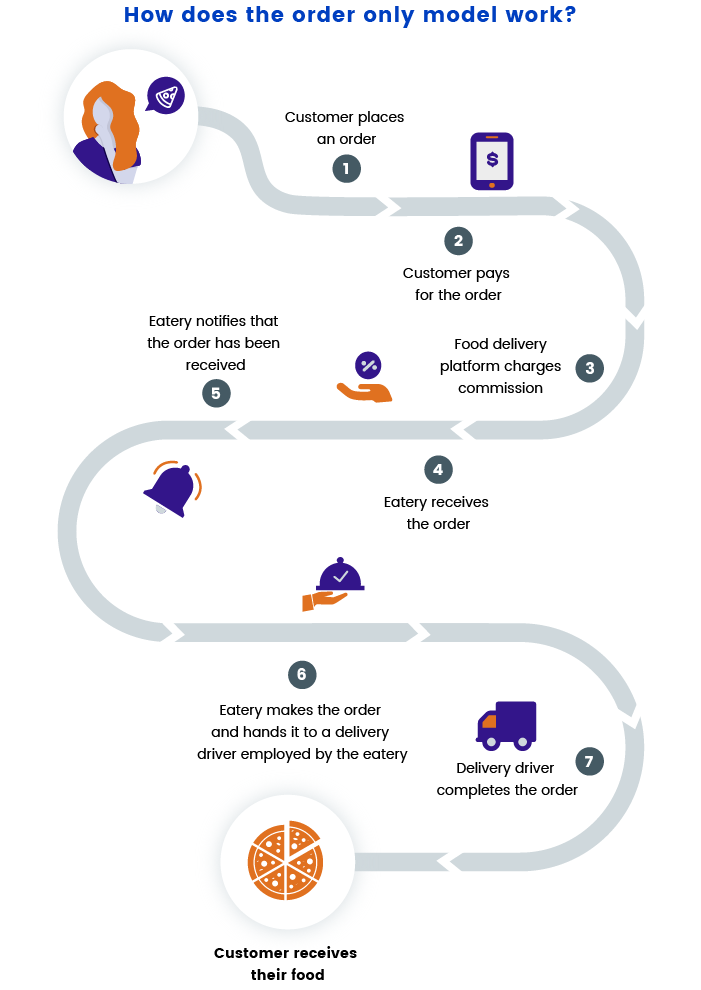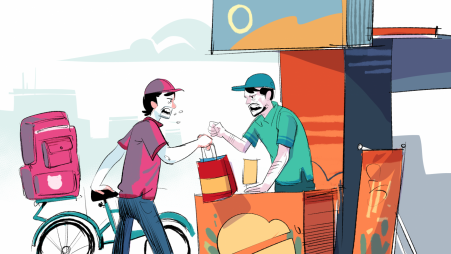As a food connoisseur, if you have frequented any of your favorite online food ordering apps, you may have noticed some of your favorite restaurants fall off the grid. It’s strange behavior, but given the entirety of a typical high aggregator commissions business model, such things happen.
Customers, on the other hand, normally have no clue about the sudden uncalled-for disappearance of their favorite food brands from a given online food ordering application. We are here to tell you why! In this post, we will highlight how high aggregator commissions are slowly affecting food businesses, especially startups’ growth towards negativity.
That being said, there’s still a wide room for opportunities for businesses in any given region. If you are a business owner, you can take your restaurant to the next level by signing up with a business partner that not only understands your business requirement but also has ample features available to scale growth.
High Aggregator Commissions Don’t Always Mean More Reach = More Growth
If you own a food business, it makes sense to sign up for a vendor account on a popular food services platform, right? Of course, owing to the popularity factor of such applications, the prospects for getting more sales, reaching more customers, and increasing revenue seem like the perfect opportunity. After all, that’s the picture that’s displayed on the front end for any restaurant, or food business startup looking to sign up.
When things start rolling out, restaurant owners realize that such companies are eating out a fair chunk of profits. How so?
For starters, there are two types of food business platforms where restaurant owners can sign up:
-
The Aggregator Website
It’s any popular food services website with a curated list of multiple restaurants. FoodPanda, UberEats, DoorDash, and GrubHub are prime examples of such food ordering apps. Since these companies already have a powerhouse of a customer base, it makes sense for restaurant owners to signup for an account and get started on making sales from the get-go.
However, what most of the restaurateurs don’t realize is hidden and disarming potential of a high aggregator commissions mode, which kicks in as soon as the same name brand makes its first sale. These commissions are normally applied on a per order basis which is apart from the service and transactional charges in many instances.
Zomato and UberEats are famous food delivery apps with operations in the US, Canada, Middle East, Australia, and many other countries. During the pre-pandemic phase, UberEats’ starting commission for MENA-based food operators was somewhere around 35%. Soon enough, it increased to 41%, which resulted in a flat payout rate of up to $5 in commission applied on each incoming online food order.
Although at some point, many restaurant owners are aware of the high aggregator commissions, they are unable to do anything about it since they’re already committed to maintaining upkeep on the on-site food establishment, overhead charges, and vice versa. In other words, it is not easier for such businesses to wrap up, close the account with one food aggregator services platform, and look for an alternative service provider – and that too, without affecting the current day-to-day customer base that’s pouring in by the hour.
During the first quarter of the year 2018, Zomato reportedly charged a 12% – 20% commission on each respective incoming order. Plus, there’s a $500 terminal fee for setting up services for a food operator for the first time. These high aggregator commissions may not look bad because most of the time, the picture isn’t entirely visible to the restaurant owner, but with time, there’s always a leak in the boat.
At the end of the month, are you making seamless profits for your business or the aggregator in the first place? That’s the question that needs to be answered in the long run.
-
The Direct Online Ordering Services Provider
Direct online service providers are those players that do not have high aggregator commissions, to begin with. Instead, these companies have a nominal monthly subscription charge, which is pretty much similar to the SaaS business model. Aside from this subscription fee, there’s a small commission percentage, somewhere between 2% – 2.5% applied on each incoming order on a food operator’s behalf.
Compared to a high aggregator commissions platform, direct online ordering service providers are the way forward for food businesses and retail startups.
In that order, a relatable example is Blink. It’s a renowned online ordering platform, which a strong emphasis on hyper-growth enablement for startups, and existing businesses through quick commerce enablement.
To that effect, Blink helps to super-charge growth through a combination of Business Intelligence tools, marketing & customer analytics data, and many other bleeding-edge technologies that would otherwise cost a fortune in the case of high aggregator commissions in play.
Aren’t High Aggregator Commissions Businesses Driving More Orders To Your Restaurant?
Technically, they are. There’s no denying it.
But, at what cost?
The fact that these platforms have a plethora of existing consumer bases helps to kick off the marketing side of any new business. Since millions of people are visiting the aggregators’ food ordering app each day – and that too, during different time slots, there’s a good chance that your restaurant will be seen by many new potential customers.
Some of them will even place orders, but in the end, those 5-star reviews are a result of your food and services quality. The aggregator is only a facilitator in that sense, which is already taking a fair proportion of your revenue without much effort.
Due to the compliance policies, food business operators have no choice but to keep up with the payments. Over time, these high aggregator commissions prevent the vendor from breaking even. If the trend continues to grow, the online food vendor has no choice, but to fold and never resume business activities on any other online food services platform.
To cull this phenomenon, many restaurants in the UAE and other parts of the world have shifted to delivery only kitchen model, where the cooking is done under a shared roof. As a result, overhead costs are maintainable; multiple brands are preparing food for their respective customers in the same facility, and everyone gets by with the long-due profits at the end of the day.
Don’t Overlook The Aggregators Marketing Fee
Taking the example of GrubHub, we feel that it is important to mention that GrubHub can charge you anywhere between 15% and 40% of your incoming food order amount. As a high aggregator commissions platform, GrubHub sustains through these percentages just to have your name-brand appear on their website or respective food ordering app.
After the initial sandboxing phase is over, you will be tempted to opt-in for the sponsored listings mode where GrubHub and such similar vendors place your restaurant’s name in the customer-facing app’s top fold. These sponsored listings promise good conversions, but at the cost of an extra fee that’s applied apart from a. high aggregator commissions, and b. per order service charges/ monthly service charges.
Lastly, many high aggregator commissions businesses have 0.5% – 1.5% separate percentage charges that are applied on credit card-based transactions. These charges are a result of your online restaurant customers paying through Credit Cards.
Although this is a warm-welcomed payment mode, unsuspecting food startups do not foresee them or account for them during the initial running phase of the business itself.
Then again, there’s the delivery factor. GrubHub takes 10% extra charges for delivering your food to your respective customers. All of these percentages add up to a fat 40% payable that awaits you at the end of each payment cycle.
You, as a food operator, on the other hand, have to account for your business profit, cost of making food, service charges, and all the extra payments that are applied on each other from high aggregator commissions.
Where Does That Leave Your Business In The Long Run?
That’s the science behind popular restaurants with a strong growth potential suddenly disappearing to a blip without any clue. Customers need to know the logic behind such instances, and they need to have the awareness factor going on to support their favorite food brand towards scalability.
Blink Co. takes a fresh approach to online ordering through a combination of social commerce and quick commerce enablement trend. We have branded online ordering systems in place for your website and mobile food ordering app – all for a nominal monthly rate.
With Blink, the benefits don’t just stop there. You have unrestricted access to customers’ analytics data, email addresses, and contact numbers to supercharge your business’s marketing campaigns. Get in touch with a company rep today to schedule a free demo.





